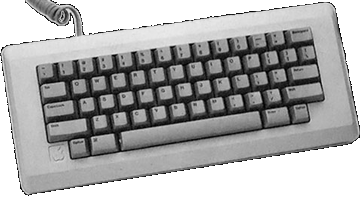Power Macintosh G5

Essentials
Family: PowerMac G3/G4/G5
Codename: Q37 (Grand Prix)
Gestalt ID: 406
Minimum OS: 10.2.8
Maximum OS: 10.5.8
Introduced: June 2003
Terminated: June 2004
Processor
CPU: PowerPC 970 "G5"
CPU Speed: 1.6/1.8/2x1.8/2x2.0 GHz
FPU: integrated
Bus Speed: 800/900/900/1000 MHz
Register Width: 64-bit
Data Bus Width: 64-bit
Address Bus Width: 64-bit
Level 1 Cache: 32 kB data, 64 kB instruction
Level 2 Cache: 512 kB on-processor
ROM: 1 MB ROM + 3 MB toolbox ROM loaded into RAM
RAM Type: PC3200 DDR
Minimum RAM Speed: 400 MHz
Onboard RAM: 0 MB
RAM slots: 8
Maximum RAM: 8.0 GB
Expansion Slots: 64-bit 133 MHz PCI-X, 2 64-bit 100 MHz PCI-X
Video
GPU: NVIDIA GeForce FX 5200 Ultra (8X AGP)
VRAM: 64 MB
Max Resolution: all resolutions supported
Video Out: DVI, ADC
Storage
Hard Drive: 160 GB 7200 RPM
ATA Bus: Serial-ATA
Optical Drive: 32x/16x/10x/8x/4x/2x CD-RW/DVD-RW
Input/Output
USB: 3 (2.0)
Firewire: 2
Firewire800: 1
Audio Out: 2x stereo 24 bit mini, Optical S/PDIF
Audio In: stereo 24 bit mini, Optical S/PDIF
Speaker: mono
Networking
Modem: 56 kbps
Ethernet: 10/100/1000Base-T
Wi-Fi: optional 802.11b/g card
Bluetooth: internal support
Miscellaneous
Power: 604 Watts
Dimensions: 20.1" H x 8.1" W x 18.7" D
Weight: 39.2 lbs.

Notes
The 1.6 GHz model had four PC2700 333 MHz RAM slots for a maximum of 4 GB of RAM, and three 33 MHz, 64-bit PCI slots. It shipped with 256 MB of RAM, and an 80 GB hard drive, and had a maximum power consumption of 420 watts. The 1.8 GHz model had a maximum power consumption of 430 watts. The 1.8 and Dual 2.0 GHz models shipped with 512 MB of RAM. The Dual 2.0 GHz model shipped with a 64 MB ATI Radeon 9600 graphics card. RAM modules for all models must be installed in matched pairs.
Announced in June 2003, the PowerMac G5 was Apple's long-awaited fifth generation PowerPC-based machine. In an important move, Apple decided to break with Motorola, and used an IBM-designed processor. Motorola had been chronically delayed for both processor design and shipment, and was at least a year away from its fifth-generation PowerPC CPU. Apple and IBM had worked closely together for nearly a year of the PowerPC 970 Processor (publicly referred to as the G5), and the 64-bit PowerMac G5 represented a huge leap forward in both processor and machine design.
Housed in an innovative new Aluminum enclosure, the PowerMac G5 was the first 64-bit consumer-level desktop computer ever sold. It featured either a single 1.6 or 1.8 GHz processor, or dual 2.0 GHz processors. It included a variety of motherboard enhancements, including PCI-X slots, and 8X AGP slot, a Serial-ATA bus, and up to 8 GB of RAM. Most impressive of all was the front-side bus speed, which was increased to half of the processor speed-up to 1.0 GHz. This represented a more than six-fold improvement over the previous PowerMac G4 model.
The PowerPC 970 was a higher-power and higher-temperature chip than its 74xx predecessors, and a considerable amount of engineering went into the cooling system of the PowerMac G5. The case was divided into 4 discreet "thermal zones" each with its own cooling system. A total of 9 computer-controlled fans were used in the G5, which amazingly was one of the quietest PowerMacs in years.
There were three configurations for the PowerMac G5. The 1.6 GHz model, with an 80 GB hard drive and 256 MB of RAM, sold for $1999. The 1.8 and dual 2.0 GHz models, both with a 160 GB hard drive and 512 MB of RAM, sold for $2399 and $2999 respectively. Although officially introduced for pre-ordering in June, the 1.6 and 1.8 GHz models didn't ship until August, and the dual 2.0 GHz models did not begin volume shipments until September. In November, Apple lowered the price of the 1.6 GHz model to $1,799, and replaced the single 1.8 GHz model with a dual 1.8 GHz model for $2,499. All models were discontinued in June 2004.
Picture Credits:
Apple, Inc.
